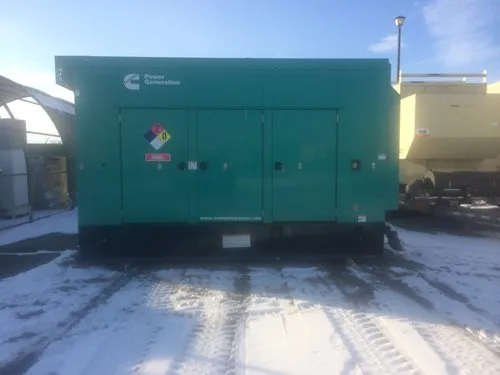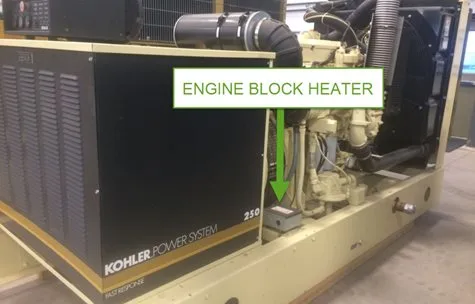
Understanding Cold Weather Challenges for Diesel Generators
Here in Colorado, temperatures recently dropped to -5 degrees F—typical for this time of year with severe cold fronts and winter storms rolling in. Many parts of the U.S. and Canada will experience similar conditions, making it crucial to understand how to prepare and deal with the different aspects of starting and running large commercial standby diesel generators in extreme environments.
Why Diesel Engines Struggle in Cold Weather
When the temperature drops, diesel engines can struggle to start for several reasons:
- Battery Slugging: Batteries typically lose 46% of their power at 0 degrees F.
- Thicker Oil: The oil becomes thicker in colder temperatures, leading to slower-moving internal parts.
- Strained Engine: The combination of these factors makes it more difficult for the engine to turn over.
It is crucial to check the battery before the cold weather sets in. Regular maintenance is the best way to avoid surprises when extreme cold hits.
Tips for Successful Cold Weather Generator Operation
Here are key tips to ensure your industrial diesel generator performs well in cold weather:
1. Check the Engine Block Heater
Always ensure the block heater is plugged into shore power and fully functional. Without this critical heat source, you’re likely to experience immediate problems. If your generator lacks a block heater and you’re in a cold area, consider adding one. If you’re in a remote location without grid power, use a small, reliable gas generator to simulate shore power and warm up the block heater for a few hours before attempting to start the generator.
2. Check the Battery Charger
The battery charger should also be connected to shore power and working properly. A dead battery is one of the leading causes of generator failures. Ensure your battery is fully charged and tested, especially in colder climates.
3. Utilize the Manual
The manual provides specific instructions on winter maintenance for your generator model. It also includes service schedules and troubleshooting tips, which are crucial when operating in extreme cold.

4. Inspect the Generator
Conduct a visual inspection of your generator. Check for debris buildup, leaks, stains, or puddles that might indicate a problem. A quick visual check can often catch issues before they cause major failures.
5. Perform Basic Maintenance
Regular maintenance is key to keeping your generator in top condition:
- Change the engine oil.
- Check the spark plugs.
- Replace the air filter periodically.
- Ensure the radiator coolant mixture is correct.
- Test and charge the battery.
6. Test Your Digital Control Panel
In extreme cold, some older models may have issues with their digital control panels. They may fail to power on or fail to display gauges. While newer models typically don’t have this problem, it’s something to watch out for during harsh winter months.
7. Check Exhaust and Ventilation
Inspect your exhaust system and ventilation regularly. You may want to add a snow hood to reduce snow buildup. Additionally, ensure the louvers and shutters are functioning correctly to manage how cold air enters the system during startup. Hydraulic shutters are best for cold climates to prevent sudden temperature shocks to the system.
8. Check the Fuel
Ensure the fuel in your generator is treated with anti-gel and anti-microbial additives. While gelling is less of an issue than in the past, it’s still a concern. Many fuel providers treat their diesel fuel, but adding an anti-gelling agent yourself can add an extra layer of protection.
9. Consider Cold Weather Kits
Many generator service companies offer winterizing kits that include specific fluids and components designed to protect your generator in colder climates. These kits help reduce failure rates and ensure your generator starts with minimal warm-up time.
Conclusion: Preparing for Cold Weather Generator Operation
By understanding these cold weather variables and planning accordingly, you can increase your chances of successfully starting and running your diesel generator when extreme cold hits.
These tips are based on our experiences with large industrial generators in Colorado. However, for more specific advice tailored to your generator and operating environment, we recommend consulting with a certified commercial electrician, electrical contractor, or experienced power generation technician.